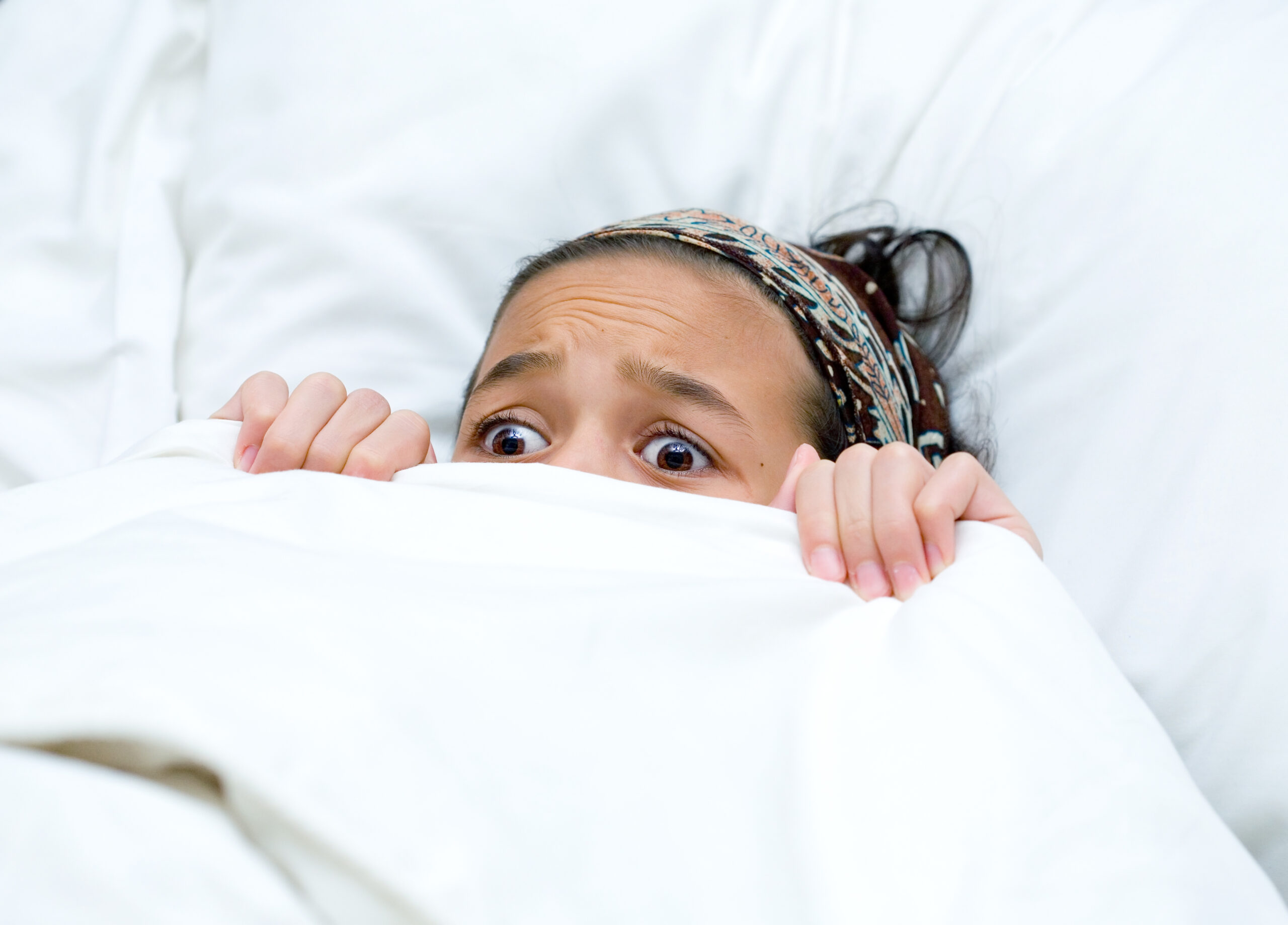Healthy 5-to-12 year-old kids who are potty-trained during the day can wet the bed at night – and it’s normal.
Ten percent of 7 year-olds wet the bed at least occasionally, and five percent wet every night. The normal age range for achieving bladder control at night is extremely broad. So don’t stress about this if your child has never been completely dry. If they have been dry for several months and start wetting again, then you need to be concerned and see their doctor.
Children aren’t physically capable of having a dry night until they have developed certain physical abilities. You wouldn’t expect your 5 year-old to be able to reach the top shelf in the kitchen or pour their own milk from a gallon. They aren’t physically big enough or strong enough to do those things. Urinary continence is no different. Kids nervous systems have to grow in order to reach this milestone and some kids are just “shorter” than others with respect to staying dry at night.
How does urination happen?
Like the latex of a balloon, the bladder stretches as it fills, and when you let go of the balloon, the pressure squeezes all the air out without you doing any work. The bladder “latex” is a type of muscle that you can’t consciously control. Bladder muscle is “smooth muscle” whereas as the muscles you use to move your body which are under your control are a different type of tissue called “skeletal muscle.” When the bladder reaches a specific point of fullness, receptors in the bladder are programmed to spasm.
When a child potty trains they learn control over the muscles that surround the bladder, but the bladder itself is made of involuntary muscles that continue to twitch when they are stretched. Children learn how to suppress these bladder spasms and they also learn to control the opening of the “balloon.” Some kids don’t feel the bladder spasm when they are asleep so they don’t have the opportunity to suppress the feeling. The air comes rushing out of the balloon before they have a chance to pinch the opening. And that “air” soaks the bed.
What are options for dealing with bedwetting?
First, you can choose not to worry about it until your child is 7 or 8 years-old. There is no shame in wearing waterproof underwear. Many parents find that kids this age overflow their overnight underwear, so be sure to buy overnight diapers that are marked as overnight rather than Pull-Ups brand. Pull-Ups are meant for potty training and are not very absorbent. The most absorbent are Goodnites Nighttime Bedwetting Underwear. They come in a variety of sizes and designs. If your child is overflowing overnight underwear, you can try cutting a slit in the Goodnites where urine tends to be the heaviest and put a second layer of the Goodnites on over it.
If your child wants to go on a sleepover or go to camp, you have several options.
- Offer a pseudo-sleepover. They get to stay at their friend’s house until 10pm and then come home to their own bed. You should be doing this as a transition to sleepovers anyway.
- Try Medication: Desmopressin (DDAVP). The hormone that controls the amount of urine we make is available as a pill. Babies make the same amount of urine around the clock. But older children and adults produce a lot less urine at night because of a hormone surge before bedtime. The brain releases a little burst of anti-diuretic hormone (ADH) at the end of the day and it makes you produce less urine all night. That hormone is affected by the circadian rhythm. Most people start having this ADH burst when they are 6 years-old, but some don’t have it until they are much older. The age at which you begin having the ADH burst is probably under genetic control. So that’s one reason bedwetting runs in families.
- Use Behavior Strategies. Have your child limit drinking in the hours before bed. Then have them lay down for 1-2 hours before going to bed, which releases the extra fluids in the body. Then urinate right before going to sleep. And be sure to talk to the friend’s parents about your child’s bedwetting. Oh, and pack extra clothes.
If your child is very bothered by the condition, get professional help. Find a pediatric urologist with a ‘continence clinic’ where the staff will help you make a plan that involves a bed alarm, medications, etc. Behavioral modification therapy is very effective. But recognize that a bed alarm is a tool used in this treatment, and is just one piece of the program. There are several kinds of bed alarms and you have to be very consistent in using them in order to get good results. Don’t make yourself crazy trying different alarms and figuring out how to set the thing up. Get help with this before you start. Read the section on Behavioral Modification in this dense, jargon-filled, but very insightful article.




